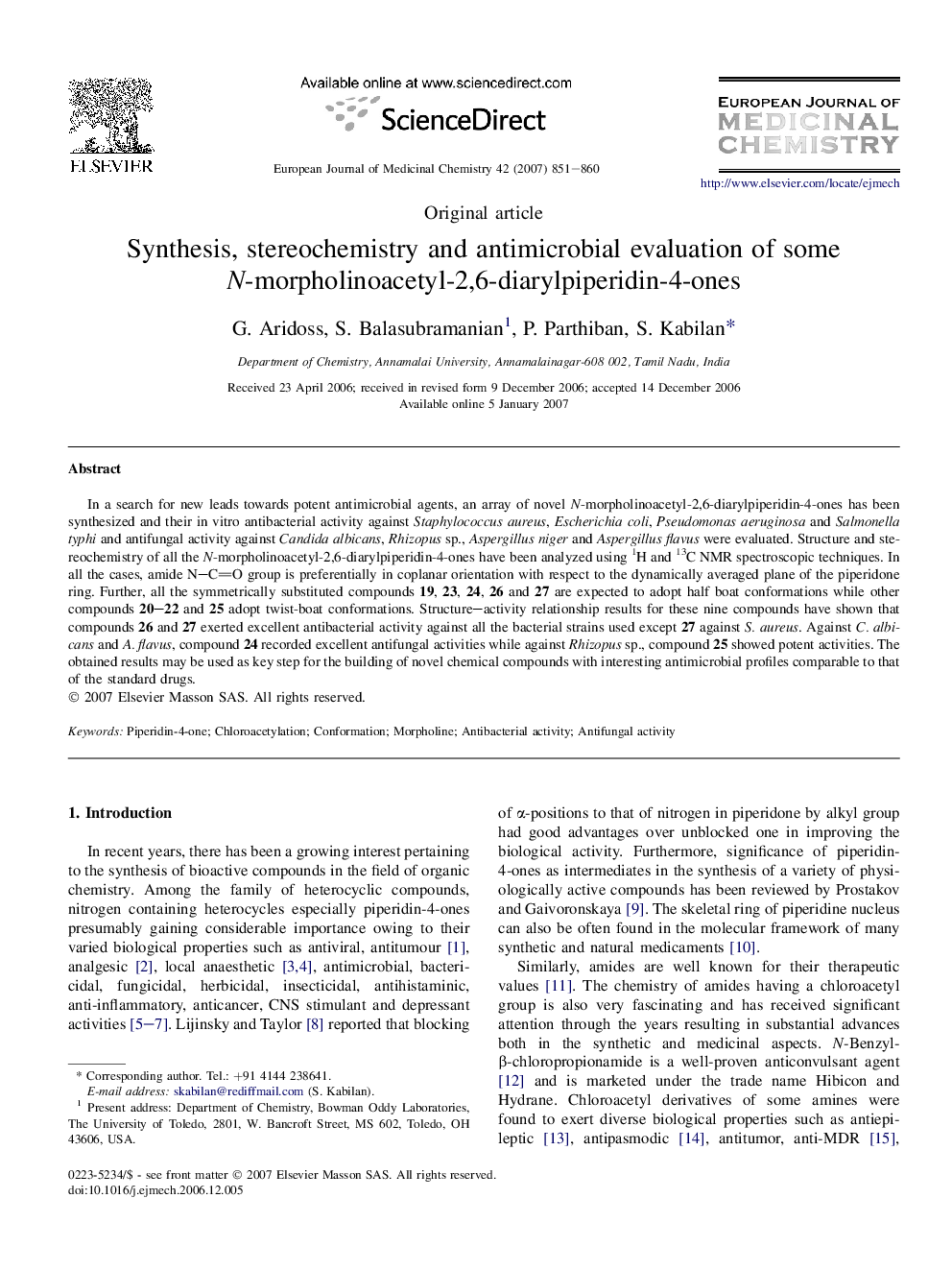| کد مقاله | کد نشریه | سال انتشار | مقاله انگلیسی | نسخه تمام متن |
|---|---|---|---|---|
| 1395576 | 1501223 | 2007 | 10 صفحه PDF | دانلود رایگان |

In a search for new leads towards potent antimicrobial agents, an array of novel N-morpholinoacetyl-2,6-diarylpiperidin-4-ones has been synthesized and their in vitro antibacterial activity against Staphylococcus aureus, Escherichia coli, Pseudomonas aeruginosa and Salmonella typhi and antifungal activity against Candida albicans, Rhizopus sp., Aspergillus niger and Aspergillus flavus were evaluated. Structure and stereochemistry of all the N-morpholinoacetyl-2,6-diarylpiperidin-4-ones have been analyzed using 1H and 13C NMR spectroscopic techniques. In all the cases, amide N–CO group is preferentially in coplanar orientation with respect to the dynamically averaged plane of the piperidone ring. Further, all the symmetrically substituted compounds 19, 23, 24, 26 and 27 are expected to adopt half boat conformations while other compounds 20–22 and 25 adopt twist-boat conformations. Structure–activity relationship results for these nine compounds have shown that compounds 26 and 27 exerted excellent antibacterial activity against all the bacterial strains used except 27 against S. aureus. Against C. albicans and A. flavus, compound 24 recorded excellent antifungal activities while against Rhizopus sp., compound 25 showed potent activities. The obtained results may be used as key step for the building of novel chemical compounds with interesting antimicrobial profiles comparable to that of the standard drugs.
2,6-Diarylpiperidin-4-ones upon N-chloroacetylation followed by base catalyzed condensation with morpholine afforded an efficient route to some N-morpholinoacetyl-2,6-diarylpiperidin-4-ones. All the synthesized compounds were analyzed using 1H and 13C NMR techniques and nonchair conformations have been proposed. The compounds were also screened eventually for their antibacterial and antifungal activities. Structure–activity relationship led to the conclusion that compounds having para substituted phenyl groups at C-2 and C-6 besides the substituents at C-3 and C-5 positions exerted better activity against all the tested bacterial and fungal strains.Figure optionsDownload as PowerPoint slide
Journal: European Journal of Medicinal Chemistry - Volume 42, Issue 6, June 2007, Pages 851–860